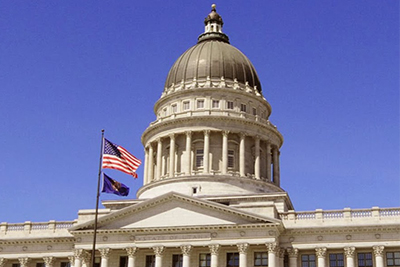Meter Installation

Water Metering Services has installed hundreds of secondary water meters into a wide variety of residential, small agricultural, and business irrigation systems.
We are experienced with installation techniques that minimize the impact on the existing landscaping and we are careful to restore the site to pre-installation conditions. Installing meters in existing systems often requires relocating existing filters, hose bibs, sprinkler and drip lines, etc. as well as regularly working with PVC and metal piping ranging in size from 1/4″ to 6″. Pictured below are typical installations of a Sensus iPerl 1″ meters and and a 1.5″ Kamstrup meter being read by a Sensus AMI system; however, we will work with each irrigation company’s preferred meter vendor and specifications for valves, drains, etc.
By specializing in water meter installation, we have the experience and equipment set-up to be very cost competitive while providing high quality work and satisfied homeowners. We are happy to discuss best practices and provide a quotation or respond to a bid invitation. We look forward to hearing from you!









S.B. 52 Compliance

S.B. 52 requires that all pressurized irrigation water used for landscaping and gardens by commercial, industrial, institutional, and residential user be metered for new services designed after April 1, 2020. Farms and associated residences that qualify under the Farmland Assessment Act are exempted. Additionally, providers must develop and submit a plan by December 31, 2019 to meter existing users and then report annually thereafter. See key excerpts and link to statue below. Please call for advice or assistance on complying with the S.B. 52 requirements.
To be exempted a residence must qualify to be taxed as a farm under the Farmland Assessment Act. To meet this standards a property must have five contiguous acres excluding land used in connection with a farmhouse that is actively devoted to raising useful plants and animals with an expectation of a profit and producing at least 50% of the average agricultural production in the county for the type of land and not in a platted area with curb, gutter or pavement that is not integral to agricultural use. See summary, key excerpts and link to the statue below.
Key Excerpts from: S.B. 52 SECONDARY WATER REQUIREMENTS
2019 GENERAL SESSION. Chief Sponsor: Jacob L. Anderegg, House Sponsor: Timothy D. Hawkes
(1) As used in this section: (a) (i) “Commercial user” means a secondary water user that is a place of business. (ii) “Commercial user” does not include a multi-family residence, an agricultural user, or a customer that falls within the industrial or institutional classification.
(b) (i) “Industrial user” means a secondary water user that manufactures or produces materials. (ii) “Industrial user” includes a manufacturing plant, an oil and gas producer, and a mining company.
(c) (i) “Institutional user” means a secondary water user that is dedicated to public service, regardless of ownership. (ii) “Institutional user” includes a school, church, hospital, park, golf course, and government facility.
(d) (i) “Residential user” means a secondary water user in a residence. (ii) “Residential user” includes a single-family or multi-family home, apartment, duplex, twin home, condominium, or planned community.
(e) “Secondary water” means water that is: (i) not culinary or water used on land assessed under Title 59, Chapter 2, Part 5, Farmland Assessment Act; and (ii) delivered to and used by an end consumer for the irrigation of landscaping or a garden.
(f) “Secondary water supplier” means an entity that supplies pressurized secondary water
(2) A secondary water supplier that begins design work for new service on or after April 1, 2020, to a commercial, industrial, institutional, or residential user shall meter the use of pressurized secondary water by the users receiving that new service.
(3) (a) A secondary water provider that provides pressurized secondary water to a commercial, industrial, institutional, or residential user shall develop a plan for metering the use of the pressurized water in accordance with this Subsection (3) (b) The plan required by this Subsection (3) shall be filed with the Division of Water Resources by no later than December 31, 2019, and address the process the secondary water supplier will follow to implement metering, including: (i) the costs of full metering by the secondary water provider; (ii) how long it would take the secondary water provider to complete full metering, including an anticipated begin date and completion date; and (iii) how the secondary water supplier will finance metering.
(5) A secondary water supplier shall on or before March 31 of each year, report to the Division of Water Rights: (a) for commercial, industrial, institutional, and residential users whose pressurized secondary water use is metered, the number of acre feet of pressurized secondary water the secondary water supplier supplied to the commercial, industrial, institutional, and residential users during the preceding 12-month period; (b) the number of secondary water meters within the secondary water supplier’s service boundary; (c) a description of the secondary water supplier’s service boundary; (d) the number of connections in each of the following categories through which the secondary water supplier supplies pressurized secondary water: (i) commercial; (ii) industrial; (iii) institutional; and (iv) residential; (e) the total volume of water that the secondary water supplier receives from its sources; and (f) the dates of service during the preceding 12-month period in which the secondary water supplier supplied pressurized secondary water.
[Sec. 4 requires DNR to study secondary water metering and Sec. 6 makes $10M available for loans]
https://le.utah.gov/~2019/bills/static/SB0052.html
Summary and Key Excerpts from: Farmland Assessment Act, Utah Code 59-2-5
Summary of Requirements
Five contiguous acres excluding land used in connection with a farmhouse that is actively devoted to raising useful plants and animals with an expectation of a profit and producing at least 50% of the average agricultural production in the county for the type of land and not in a platted area with curb, gutter or pavement that is not integral to agricultural use.
Key Excerpts
59-2-502 Definitions. As used in this part:
(1) “Actively devoted to agricultural use” means that the land in agricultural use produces in excess of 50% of the average agricultural production per acre:
(a) as determined under Section 59-2-503; and (b) for: (i) the given type of land; and (ii) the given county or area.
(4) “Land in agricultural use” means: (a) land devoted to the raising of useful plants and animals with a reasonable expectation of profit, including:
(i) forages and sod crops; (ii) grains and feed crops; (iii) livestock as defined in Section 59-2-102; (iv) trees and fruits; or (v) vegetables, nursery, floral, and ornamental stock; or (b) land devoted to and meeting the requirements and qualifications for payments or other compensation under a crop-land retirement program with an agency of the state or federal government.
(5) “Other eligible acreage” means land that is: (a) five or more contiguous acres;
(b) eligible for assessment under this part; and (c) (i) located in the same county as land described in Subsection 59-2-503(1)(a); or (ii) contiguous across county lines with land described in Subsection 59-2-503(1)(a) as provided in Section 59-2-512.
(6) “Platted” means land in which: (a) parcels of ground are laid out and mapped by their boundaries, course, and extent; and (b) the plat has been approved as provided in Section 10-9a-604 or 17-27a-604.
59-2-503 Qualifications for agricultural use assessment.
(1) For general property tax purposes, land may be assessed on the basis of the value that the land has for agricultural use if the land:
(a) is not less than five contiguous acres in area, except that land may be assessed on the basis of the value that the land has for agricultural use:
(i) if: (A) the land is devoted to agricultural use in conjunction with other eligible acreage; and (B) the land and the other eligible acreage described in Subsection (1)(a)(i)(A) have identical legal ownership; or
(ii) as provided under Subsection (4); and (b) except as provided in Subsection (5) or (6): (i) is actively devoted to agricultural use; and (ii) has been actively devoted to agricultural use for at least two successive years immediately
preceding the tax year for which the land is being assessed under this part.
(2) In determining whether land is actively devoted to agricultural use, production per acre for a given county or area and a given type of land shall be determined by using the first applicable of the following: (a) production levels reported in the current publication of the Utah Agricultural Statistics; (b) current crop budgets developed and published by Utah State University; and (c) other acceptable standards of agricultural production designated by the commission by rule
59-2-504 Exclusions from designation as agricultural use — Exception.
(1) Except as provided in Subsection (2), land may not be assessed under this part if the land is: (a) part of a platted subdivision or planned unit development, with restrictions prohibiting its use for agricultural purposes with surface improvements in place, whether within or without a city;
Or (b) platted with surface improvements in place that are not an integral part of agricultural use.
(3) For purposes of this section: (a) “platted with surface improvements in place” means that: (i) land is platted; and (ii) all surface improvements necessary for the land to be sold as a lot or a unit are in place:
(b) “surface improvement” means: (i) a curb; (ii) a gutter; or (iii) pavement.
59-2-507 Land included as agricultural — Site of farmhouse excluded — Taxation of structures and site of farmhouse.
(1) (a) Land under barns, sheds, silos, cribs, greenhouses and like structures, lakes, dams, ponds, streams, and irrigation ditches and like facilities is included in determining the total area of land actively devoted to agricultural use.
(b) Land that is under a farmhouse and land used in connection with a farmhouse is excluded from the determination described in Subsection (1)(a).
(2) The following shall be valued, assessed, and taxed using the same standards, methods, and procedures that apply to other taxable structures and other land in the county:
(a) a structure, except as provided in Subsection (3), that is located on land in agricultural use;
(b) a farmhouse and the land on which the farmhouse is located; and
(c) land used in connection with a farmhouse.
https://le.utah.gov/xcode/Title59/Chapter2/C59-2-P5_1800010118000101.pdf
Loan and Grant Preparation

SB 52 offers low interest meter installation loans. Large-scale WaterSMART grant applications are typically due in September while small-scale WaterSMART grant applications are due in March. Let us help prepare your applications.
Michael Cole has prepared and submitted 11 federal and state grants. All 11 applications were successfully awarded grants. We can prepare your WaterSMART grant application and assist with securing 1% loan money from the Utah Division of Natural Resources. Contact us to discuss grant and loan requirements and application deadlines.
Funding from the Board of Water Resources
The Utah Board of Water Resources (through the Division of Water Resources) may make available up to $10 million each year in low-interest loans to fund the installation of new secondary irrigation water meters. Typical financing terms and conditions include:
- An 85/15% (Water Resources/Local Entity) project funding split
- 1% interest rate on the financing form the Division of Water Resources
- Repayment period of five years less than the meter’s warranty
- The funding recipient must incorporate an educational component on its billing statement and/or the entity must charge based on usage with a tiered conservation water rate
- Additional requirements typical of normal Water Resources funded projects
[July 1, 2019 Letter from Eric Millis, P.E. and Kent Jones, P.E.]
See Secondary Water Metering Funding Program for additional details.
Loan applications are typically due two months before a board meeting. Funds are then typically committed at the next board meeting. See Funding Application.
WaterSMART Grants
The Bureau of Reclamation offers WaterSMART grants in two size categories that can assist with secondary water meter installation and smart irrigation controller programs. The Small-Scale Water Efficiency grant program offers grants of up to $75,000 with a maximum project size of $200,000 with up to a 50/50 cost share. Sixty-three small-scale grants were awarded nationwide in 2019. Application are typically due in March with awards in June.
The larger Water and Energy Efficiency Grants now offers funding in tiers of up to $500,000 and up to $2,00,000. The application process is more complex and competitive than the small-scale program. Application are typically due in September with awards in February and funding agreements completed in September.
Please contact us as soon as possible to discuss options. Three WaterSMART grants ranging in size from $50,000 to $450,000 were recently awarded to clients of Water Metering Services.
Consulting Services

We can help with meter program recommendations, bid preparation, irrigation system research, GIS services, and public outreach program.
If you have questions or need assistance with your meter program strategy, give us a call and we would be glad to provide free guidance and we are also able to utilize our expertise to provide contract services as needed.




